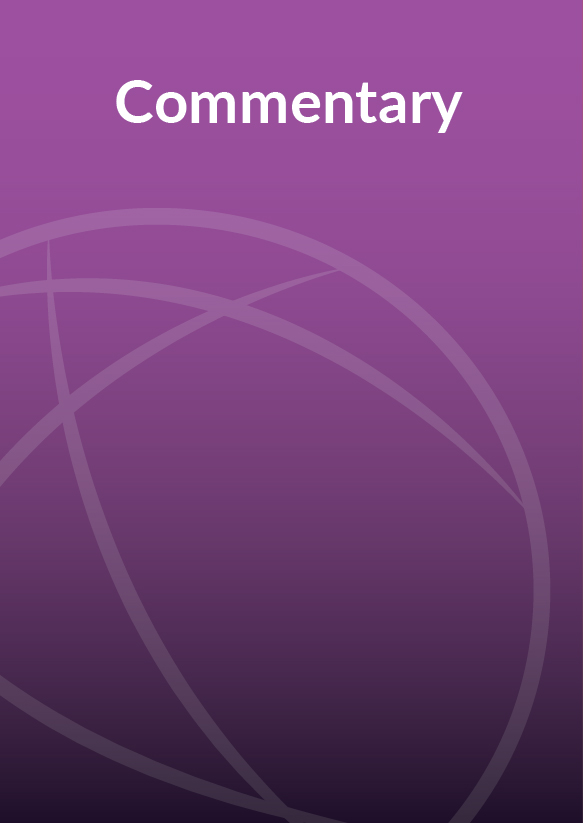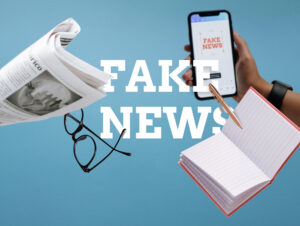Publications

SYNOPSIS
Humanitarian organisations are trying to adjust to the rapid transformation of information and communication technology. The rise in disinformation and misinformation poses significant challenges to the sharing of accurate information in times of need. Humanitarian organisations must invest more in efforts to adapt to the realities of the information landscape today.

COMMENTARY
The Digital Age has transformed the way we live and work. The use of and access to advanced technology has also altered humanitarian work with impact on data collection, communication, finance and humanitarian operations on the ground. Social media has transformed the way people connect, communicate and share information instantaneously in the humanitarian space, including communications between affected communities and those offering assistance.
Along with this improved ability to share information and communicate also comes disinformation and misinformation. As humanitarian relief organisations work primarily in crisis contexts where disinformation and misinformation thrive, they face the challenge of ensuring that people trust the information they share and can access the help they need.
Disinformation and Misinformation in the Information Age
While false or misleading information are not new, the advent of the Digital Age has accelerated their dissemination in the medium of what is now commonly known as ‘fake news.’ This can take the form of misinformation where false or inaccurate information is spread regardless of any intent to deceive, although the source could be due to a genuine misunderstanding or the result of a targeted disinformation campaign, and disinformation where false information is deliberately spread, often covertly, to deceive or influence others.
Such communication can take the form of a campaign mounted by both state and non-state actors through a variety of media sources – notably through social media – which generally tend to be targeted at vulnerable communities. A United Nations report highlighted the significant role social media played in Myanmar that facilitated the spread of anti-Rohingya sentiment. And, according to a report by Amnesty International, insufficient content moderation by Facebook contributed to the spread of hate speech in the years leading up to the outbreak of violence.
Disinformation and misinformation spread particularly quickly during a crisis as levels of anxiety and uncertainty are high while information available is low. This was the case at the beginning of the COVID-19 pandemic when the amount of fake news increased exponentially.
This “infodemic” undermined the public health response during the pandemic, leading to risk-taking behaviour that could and did cause harm, especially if there was an accompanying information void. A rumour that the consumption of highly concentrated alcohol could disinfect the body and kill the COVID-19 virus travelled around the world in 2020 and led to the death of approximately 800 people and the hospitalisation of almost 6,000 others in Iran alone. Public trust in the authorities, and humanitarian and health workers were a major casualty of this infodemic.
The Impact on Humanitarian Organisations
Disinformation and misinformation also have direct implications on humanitarian organisations themselves, and not just in the context in which they work as these negative campaigns affect their credibility. After all, the purpose of these campaigns may not necessarily be about convincing the audience but to sow doubt about the legitimacy of the humanitarian organisations. For example, in 2018, Save the Children – an international humanitarian organisation established to improve the lives of children through better education, health care, and economic opportunities, as well as providing emergency aid in natural disasters, war, and other conflicts – was the target of a disinformation campaign accusing it of colluding with human traffickers. This resulted in media attention on their search-and-rescue activities in the Mediterranean, with the far-right group, Defend Europe, even hiring its own boat to try to stop them.
The principles of humanity, neutrality, impartiality, and independence that form the basis of humanitarian work are built on trust. If the reputation of a humanitarian organisation is tarnished due to disinformation and misinformation, this trust is eroded. And if public opinion is affected, funding and other support for the work of that humanitarian organisation will be adversely affected too, ultimately impacting those in need of assistance.
This erosion of trust not only inhibits humanitarian work, but may even lead to physical violence perpetuated against humanitarian workers by the very people they seek to help. This was seen during the 2014 Ebola breakout in Guinea. Low levels of public trust in officials combined with disinformation and misinformation led to attacks and incidences of fatalities amongst humanitarian workers. There is therefore a need for humanitarian organisations to be proactive in building a relationship with the community before crises take place.
What should humanitarian organisations do?
As trust is a crucial component of all humanitarian work, humanitarian organisations need to build a solid reputation for reliable information-sharing as part of their culture.
Firstly, communication should be localised and focused mainly on news or information that is oriented around community concerns. By working directly with trusted leaders and entities in the community, humanitarian organisations can help to establish legitimacy. Public criticism or mistakes made, especially during a crisis should not be covered up to avoid laying the ground for disinformation and misinformation. Such transparency contributes to a track record of honesty and reliability.
Secondly, humanitarian organisations should develop tools to counter disinformation and misinformation as part of their cybersecurity strategy. One way to achieve this is to build a coalition with dependable social media companies, fact-checking organisations and news outlets. This will enable humanitarian relief personnel to draw on a bigger pool of experience and expertise. When fake news is uncovered, action to counter it must be swift and vigorous such as by issuing corrective statements in response to these false claims. This can be done directly through the organisation’s existing media channels or contacting the social media platforms directly. Effective responses by organisations will therefore depend on their ability to access and assess updated information from constantly evolving situations.
Disinformation and misinformation should be considered a key area of concern for the humanitarian sector. It is essential for the humanitarian community to establish and enhance trust building efforts with affected communities and the broader public through the provision of timely and accurate information. Only by developing such relationships with other actors involved in the fight against misinformation and disinformation can they counter malicious campaigns aimed at undermining their work.
About the Author
S. Nanthini is a Senior Analyst with the Humanitarian Assistance and Disaster Relief (HADR) Programme at the Centre for Non-Traditional Security Studies (NTS Centre), S. Rajaratnam School of International Studies (RSIS), Nanyang Technological University (NTU), Singapore.
